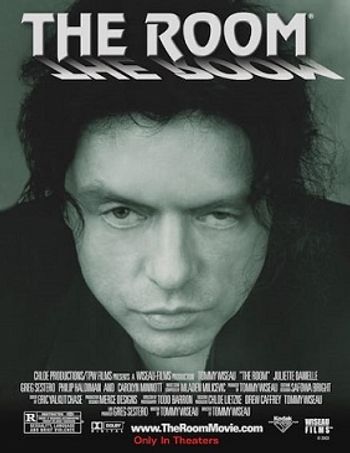
Treating Patients with Visual Loss: How Our Workshop Evolved
It seems ironic that the Oedipus myth about self-inflicted blindness is so central to psychiatry, but there are few guidelines on treating sensory loss. Here, the evolution of an APA workshop on treating patients with visual impairments.
There are good cases, there are great cases, and there are “there but for the grace of G-d go I” cases. Our APA workshop on treating patients with visual impairments was in part inspired by one of those “there but for the grace of G-d” cases.
CASE VIGNETTE
Fred was a 30-something- year-old man who was slowly but surely losing his vision to inherited retinitis pigmentosa. His vision problems began early. His family was in turmoil because one side blamed the other for their “bad genes.” Everyone blamed the patient for his “eccentricities.” His father refused to believe that Fred had autism spectrum disorder (ASD) and ADHD, even though schoolteachers noticed something amiss from the start. A one-time military man, his father also disapproved of Braille, because it “made men look weak.”
In a strange way, Fred’s Asperger traits made it easier to cope with his progressive visual deficits. He loved dinosaurs, even as an adult, and was thrilled to land a job at the local science museum, while he could still see. Over time, he landed in the gift shop, where his limited vision was less of a hindrance. He could feel the tails and the horns, the humps and the bumps, of the plastic dinosaur models sold in the store. Fred knew brontosaurus from T-Rex by touch. He could tell stories about each prehistoric beast. He spoke non-stop about these extinct animals to every child who passed his way, impressing parents, teachers and tourists alike. Someone else might have grown bored, talking about the same subject day after day, year after year, without a promotion in sight, but Fred was in his element. He had long since accepted that he would never become the vet he once wanted to be.
That’s not to say that he didn’t grow depressed from the loneliness and the family strife, or from the chidings he endured from his supervisor at the shop. He benefited from antidepressants and a listening ear. His attention stayed in check because he was careful about his ADHD medications. He always arrived early for doctors’ appointments. He visited the center for the blind biweekly, to hear volunteers read books about dinosaurs aloud. He sensed that his assigned volunteer preferred to discuss current events in newspapers, instead of describing details of dinosaur illustrations-so he was happy when technology advanced, and talking video viewing terminals took over where his reader left off.
It came as a surprise when Fred emailed me mid-month, saying that he needed an early refill on his ADHD prescription. As usual, his email arrived in a huge font-far larger than the 140-point maximum on my PC. However, requests for early refills were not the norm for Fred, for he was not one to misuse medications. As a policy, I did not reissue refills for controlled medications-but this out-of-character request surely warranted an early appointment, and a stat one at that.
Fred sounded more agitated than usual when he arrived at the office and explained that he confused his ADHD medications with new ones prescribed by his PCP. They were the same size and shape, so he assumed that they were the same pills. He knew them by touch, just like his dinosaur toys. His PCP told him to take two pills per day, so he reached into his usual bottle, taking two pills each morning, until his psychotropic medications disappeared in two weeks’ time. Then he realized something was wrong.
Fred did fine with routine, but his routine had changed. I called the pharmacy, to ask how this could happen. The answer was easy: yes, the pills were strikingly similar. I asked the pharmacist if they explain new pills to persons with low vision. The supervising pharmacist said that “there is no mechanism in place” (at a major chain!). I knew times had changed, and that my own vision of a “friendly family pharmacist” was a throwback to a by-gone era, when pharmacists stepped out from behind the counter to counsel patients. Norman Rockwell’s images from 1939 were nice, but not the norm.
At my urging, the pharmacist promised to review Fred’s next refill with him personally-but she reminded me that she worked limited hours on rotating shifts. When I asked her to alert her staff to this situation, again she said that “there is no mechanism in place.” No yellow stickies on the counter, no bulletin board on the wall, nothing to pass on information from one shift to the next.
Horrific visions of what could have happened passed through my mind. What if his new prescription had been anti-hypertensives-and Fred doubled the dose of a med that potentially increases BP when he needed meds to lower his blood pressure? Fortunately, his new medication lowered cholesterol, but the gravity of this near miss struck me just the same. I later learned that VA training programs that rehabilitate the visually impaired teach techniques to label and identify medications early on and justifiably so. Unfortunately, Fred’s psychiatric symptoms made it difficult for him to understand the need for rehab.
This situation deserved further study, and seemed extra important, because advocacy groups for persons with visual impairments are not as “vocal” as groups as hearing-impaired persons. Deaf persons who use American Sign Language (ASL) develop group cohesion by sharing the same “language”-but vision-impaired persons are often socially isolated, afraid to venture outside to unfamiliar terrain, for fear of their safety.
Importantly, at the time of Fred’s near-catastrophe, I was supervising a resident whose patient lost most vision to diabetes (DM) retinopathy. Before starting psychiatric treatment, the patient had been too depressed to follow-up with medical appointments. Sadly, 98% of serious diabetes-related vision loss can be prevented with early diagnosis and good glucose control. Our shared concerns led to a journal article, which expanded into a workshop for APA.1
It seemed ironic that the Oedipus myth about self-inflicted blindness is so central to psychiatry, but there are few guidelines on treating sensory loss in the general psychiatry center, outside of specialized programs. The Internet introduced us to wonderful VA websites and services for vision-impaired veterans. At the APA meeting, we will share this and many more resources and journal articles with workshop participants.2-4
At the workshop, we define “low vision” and “blindness” and provide epidemiological data that proves the gravity of the situation: vision loss is expected to explode as the population ages. Geriatric patients bear most of the burden of visual loss. Children who are born blind are likely to have other disabilities.
We begin by examining depictions of vision-impaired people in myth, religion, literature, movies, art, music, and comics, not just in homage to Sophocles’ play about Oedipus Rex but in recognition of the role of culture and media in molding our attitudes. Cultural preconceptions impact the way society and health care providers approach persons with low vision and influence the ways that persons view themselves. Some societies revere the blind, crediting them with uncanny “insight,” while many more cultures marginalize them. On a positive note, we tell about touchable or talking museum displays.
We review the links between music and blindness and between spiritually oriented music in particular. Because several vision-impaired performers are so successful, it is easy to overlook the day-to-day difficulties experienced by ordinary persons. Half of all vision-impaired persons are unemployed, and they have twice the rate of depression as the general population. Family support mitigates this risk.
We stress the ophthalmic side effects of psychotropic medications (which are many), paying as much attention to “older” or outdated medications (phenothiazines, tricyclics, lithium), which are resurfacing as managed care restricts access to newer or more expensive medications. With DM being the leading cause of vision loss in adults, we note the risks of unmonitored DM, promoted by metabolic syndrome from atypical antipsychotics (AAPs). We speak about direct results of vision loss (ie, hallucinations, sleep disturbance/circadian rhythm disruption, seasonal affective disorder), as well as secondary psychiatric reactions and the impact of premorbid personality and pre-existing psychiatric disorders.
This workshop evaluates types of therapies that improve outlook for older adults (such as Problem-Solving Therapy or PST), pointing out that family support can be as helpful as psychotherapy. We talk about vision and veterans, who may have other war injuries, traumatic brain injury, and PTSD.
There is good news: cataract surgery in nursing home patients improves quality of life, even when cognition is impaired, but compliance with treatment and rehab regimens can be compromised by untreated depression. We list ancillary services, such as occupational therapy and then we can brainstorm about ways to avoid potentially deadly pharmacy errors from unlabeled medications. As always, we consider medico-legal consequences and American Disability Act accommodations, as well as clinical issues.
With “integrated care” that combines psychiatry and medicine just around the corner, we hope this workshop kindles an updated dialogue on psychiatric treatments for persons with low vision.
Disclosures:
Dr Packer is Assistant Clinical Professor of Psychiatry and Behavioral Sciences at the Albert Einstein College of Medicine, Bronx, NY. She is also in private practice in New York City. Dr Packer reports that she receives royalties for her book, Superheros and Superegos: The Minds behind the Masks (Santa Barbara, CA: Praeger/ABC-CLIO; 2010), and will include a brief discussion of comics about vision-impaired doctors and others in this workshop.
References:
1. Packer S, Ascher M. Therapy helps visually impaired patient with depression. Clin Psych News. Jun 11, 2013.
2. Schuyler D. Experts debate usefulness of vision restoration therapy. Psychiatric Times. November 01, 2007. http://www.psychiatrictimes.com/articles/experts-debate-usefulness-vision-restoration-therapy.
3. Packer S. More than meets the eye: spotting medical mimics. Psychiatric Times. 2014;31(1):30-31. http://www.psychiatrictimes.com/blogs/couch-crisis/more-meets-eye-spotting-medical-mimics.
4. Packer S. Altered mental state: the clue in the blue bottle. Psychiatric Times. 2014;31(2):6-8. http://www.psychiatrictimes.com/neuropsychiatry/altered-mental-state-clue-blue-bottle.
Newsletter
Receive trusted psychiatric news, expert analysis, and clinical insights — subscribe today to support your practice and your patients.

















